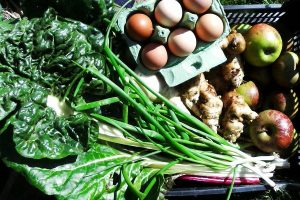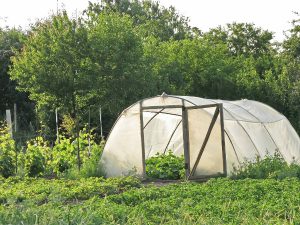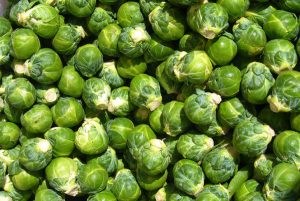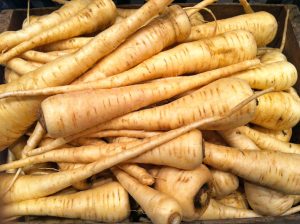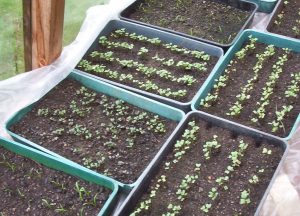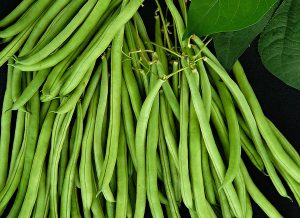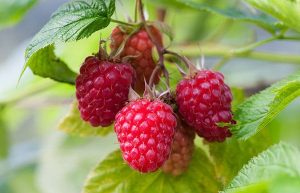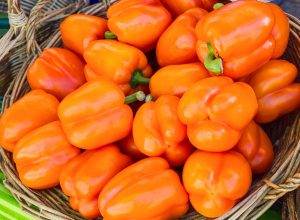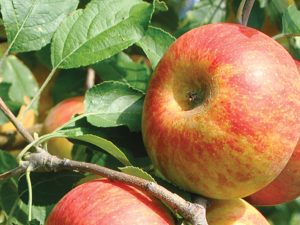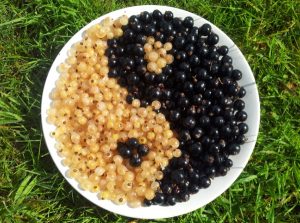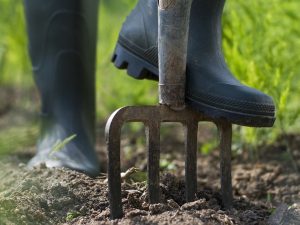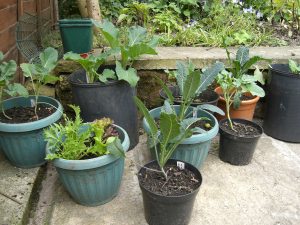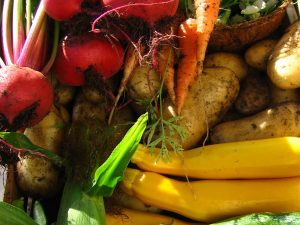November is the month when the hard frosts and heavy rain usually arrive so it’s important to grab whatever time you can on the plot in case you don’t get another chance.
Sowing & planting in November on the vegetable plot
Now is the time to plant out your garlic which likes a period of dormancy and cold prior to growing away in the spring.

If you’ve a heavy soil that tends to hold water there is the danger of the cloves rotting. To stop this, dib your planting hole as usual and then drop some sharp sand or fine gravel in the base of the hole. An inch of sand or grit will provide enough drainage to save the day.
Fill the hole above the clove with compost to get them off to a good start. Autumn planted broad beans go in now but do be aware that in northern areas and wet soils the success rate will be lower than the drier and sunnier south-east of the country.

Hardy peas like meteor can also go in now.
It’s a little too late for most green manures but early in the month you can sow grazing rye to hold nutrients in the soil over winter.

General garden tasks for November
As with October, as ground becomes vacant, you can dig it over and spread manure over the surface. Leave the soil roughly dug in large clumps and the worms will break these up as they get the manure. The freezing and thawing of water in the soil will cause the soil to break up finely so becoming easier to handle in the spring.
Digging over introduces air into the soil, loosening it and avoiding it turning into a solid pan. It also exposes insect pests to the open air where the birds can eat them. Double or deep digging and introducing manure or composts to the base of the trenches will deepen your top soil providing a better growing medium.

My allotment in November, soil turned over and lime applied.
With light, sandy soils digging every year is not needed but heavy soils really benefit from it. It’s also the time to lime as required but don’t add lime and manure at the same time.
Keep a close eye on your winter brassicas and remember that the birds are hungry at this time of year so cover with netting if required.
With staked Brussels sprouts, double check all is firm or windrock will break the root hairs and cause the sprouts to blow.

If you’re making a runner bean trench, keep on filling it, adding a little soil over each layer of kitchen waste as you go.

If you’ve a good supply of leaves, which should be falling fast now, make leafmould.Start by building a leaf mould cage. Very simple to do, you just drive four stakes into the ground and staple chicken netting around to make the cage.
Pile in the leaves and leave them alone for a year. You will find the pile reduces by two thirds at least, so keep filling the bin as more leaves fall. If you have one those marvellous garden vacuum mulchers that suck up leaves and chop them, you will find the leaves rot down much more quickly.
Keep an eye out for council sweepers, they may just drop you a load of leaves when they call to collect a few veggies off you.
Fruit
It’s pruning time for apples and pears and they’ll benefit from some compost around the base as a mulch. With younger, staked trees check the stakes are firm and the ties. Winter winds can shake the roots loose on young trees causing poor growth or even death .
As with October, November is a good month to attend to pruning the raspberries, blackberries and hybrid berries as well as being the ideal time to plant bare rooted canes. Don’t forget to add plenty of compost to the soil and 250gr (8oz) per square yard of bonemeal.
Harvest
Your leeks should be coming ready now. Harvest every other one in a row leaving the rest to grow on. Brussels sprouts should be starting as well. Pick from the bottom of the plant upwards. A sprout is for winter, not just for Christmas!
Along with sprouts you can harvest kale and take up the winter cabbages and cauliflowers. A cauliflower tightly wrapped in cling-film kept in the fridge can be kept fresh for as long as six weeks.

Maincrop carrots can be lifted to store safe from pests in damp sand or peat in your store along with parsnips but they do hold in the ground better than carrots.
You could still be harvesting celery and celeriac, kale and kohl rabi as well as turnips, swedes and spinach.
Check any vegetables you have in store and removing anything that has started to rot before it spreads. Potatoes really need to be checked and watch out for slugs that have emerged from a potato to go and damage another one.
You can get John’s book Vegetable Growing Month-by-Month here.


